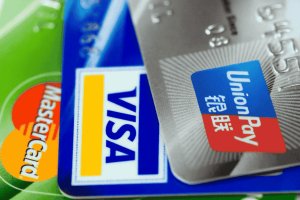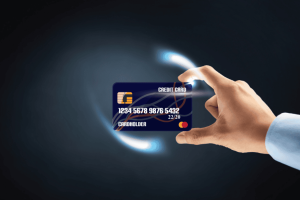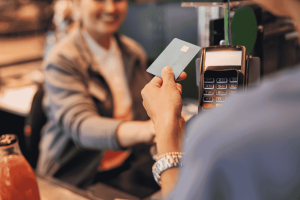For many people across Asia, keeping track of spending feels like another chore in an already busy day. Between rising costs of living, fluctuating fuel prices, and the temptation of online sales, it’s easy to lose track of where your money goes. But understanding your daily, weekly, and monthly expenses is the first and most powerful step toward better financial health. The good news? You don’t need to log every single transaction or spend hours analyzing spreadsheets to stay in control. With the right strategies — and the right tools — you can track your spending effectively without feeling overwhelmed.
Why Simple Spending Awareness Makes a Big Difference

Tracking expenses isn’t about restriction — it’s about awareness. Once you know your spending patterns, you can make smarter decisions. Even small insights — like realizing how much you spend on delivery apps each week — can create space for savings or investment.
In countries like India, where digital payments through UPI platforms (e.g., PhonePe, Paytm, Google Pay) have surged, many people are now able to see real-time data of their transactions, making expense tracking more accessible than ever. Similarly, in Singapore, apps like DBS NAV Planner or Seedly offer automated tracking and categorization, reducing manual work while giving you a full financial overview.
Start Small: Focus on Key Spending Categories
One reason people abandon expense tracking is that they try to do too much at once. You don’t need to track every cup of coffee to build good financial habits. Instead, begin by identifying and monitoring a few major categories:
Suggested Categories to Begin With:
- Essentials: Rent, groceries, utilities, transportation
- Lifestyle: Dining out, entertainment, shopping
- Recurring bills: Subscriptions, phone plans, insurance
- Transfers: Loan payments, savings, remittances
In Thailand, where people often use a combination of cash and mobile payments, tracking essentials like rent and daily food costs can already reveal big opportunities to adjust spending.
Use Mobile Apps That Fit Your Lifestyle
Gone are the days when tracking expenses meant keeping a paper notebook. A wide variety of mobile apps designed for Asia can now simplify the process.
Top Expense Tracking Apps Across Asia
| App | Region | Key Features |
| Money Lover | Vietnam, Thailand, Malaysia | Manual entry, budget setting, and charts with local currency |
| Spendee | Southeast Asia | Syncs with bank accounts, colorful visuals, shared budgets |
| Walnut | India | Auto-sorts SMS-based transaction alerts, offline support |
| Seedly | Singapore | Integrated with local banks, supports community insights |
| Toshl Finance | Global | Visual timelines, flexible currency and budgeting tools |
These tools work especially well for people who receive mobile payment notifications or SMS receipts, a common feature with banks and e-wallets across Asia.
Automate Wherever Possible
One of the biggest barriers to consistent expense tracking is the manual effort. To reduce this friction, automation is key.
Sync with Bank and Wallet Data
In Indonesia, users of digital banks like Jago or Blu by BCA can see categorized spending summaries within the app, without needing to track manually. Similarly, in India, apps like Fi offer real-time categorization and nudges to warn you when you overspend in a category.
Link Your Credit or Debit Card
If you primarily use cards, linking your accounts to a money management app will allow automatic imports of transaction data. Make sure to choose a platform that supports your bank or wallet provider.
Use Calendar Reminders
Even with automation, it helps to schedule a weekly five-minute review. Check your top three categories and reflect on any unexpected spending. This routine can prevent surprises at the end of the month.
Don’t Obsess Over Perfection

It’s easy to get discouraged when a transaction is miscategorized or when you forget to log cash purchases. But tracking isn’t about perfection — it’s about progress. If you miss a few days, just pick it up again.
In Bangladesh, where many people still use cash for small purchases, it may not be realistic to track every snack or bus fare. Instead, create estimates for small cash expenses and focus on higher-impact spending like grocery shopping, school fees, or mobile top-ups.
Leverage Digital Wallet Histories
Digital wallets, widely used across Asia, provide detailed transaction histories that many users often overlook. If you’re using platforms like GCash (Philippines), Touch ’n Go (Malaysia), or LINE Pay (Taiwan/Japan), you can easily access important details including:
- Date and time of each transaction
- Merchant or biller name
- Amount paid
- Sometimes, automatically assigned spending categories
By reviewing your digital wallet activity weekly, you can quickly identify spending patterns—whether it’s frequent payments for transport, dining, or gaming credits. This insight helps you better understand your habits and manage your finances more effectively.
Try the Weekly Snapshot Method
If daily tracking feels overwhelming, the Weekly Snapshot Method offers a simple yet effective way to keep your finances in check.
How It Works:
- Choose a consistent day each week (Sunday works well).
- Open your bank and digital wallet apps to review transactions.
- Record total expenses across a few key categories—like groceries, transport, and entertainment.
- Compare these totals against your budget targets, if you have one.
- Identify one or two actionable goals for the coming week, such as cutting back on food delivery or limiting ride-hailing rides.
This approach is ideal for busy professionals in fast-paced cities like Seoul, Bangkok, or Kuala Lumpur, providing an easy way to stay financially mindful without the stress of daily tracking.
Make It Visual and Fun
Tracking money doesn’t have to be dull. Visual dashboards, emojis, and gamified apps can make it feel more rewarding.
In Taiwan, many young people use Monny, an app that turns expense tracking into a game, complete with levels and animations. Meanwhile, users in Japan enjoy minimalist apps like Zaim, which focus on beautiful graphs and clean interfaces.
Color-coded pie charts and spending streaks can make the process feel more like a health tracker and less like an accounting tool.
Set a Monthly Review Routine
Even if you only track weekly or biweekly, a monthly review helps close the loop:
- Total income vs. expenses
- Any overspending trends
- Missed payments or subscriptions to cancel
- Opportunities to save or reallocate funds
In cities like Singapore, where the cost of living is high, these monthly reviews are essential to staying within budget — especially when dealing with rent, transportation, and food delivery.
Involve Your Household or Partner
Expense tracking is easier — and more effective — when done with your family or significant other. Apps like Wallet by BudgetBakers or Spendee offer shared budgets, which work well for joint expenses like groceries, kids’ education, or utility bills.
In places like Manila or Hanoi, where multigenerational families often live together, sharing financial responsibilities can lead to better coordination and savings.
Small Steps Lead to Big Awareness

Tracking your spending doesn’t mean obsessing over every coin. It means being aware of where your money goes, and using that knowledge to make informed decisions.
With the help of intuitive apps, simplified routines, and just a few minutes each week, you can build financial awareness that lasts — without burning out. Whether you’re juggling cash and cards in Jakarta or managing online subscriptions in Seoul, these strategies will help you track your money in a way that feels empowering, not exhausting.
It’s not about being perfect. It’s about being consistent. Start with what feels manageable, and build from there. Your future finances will thank you.









